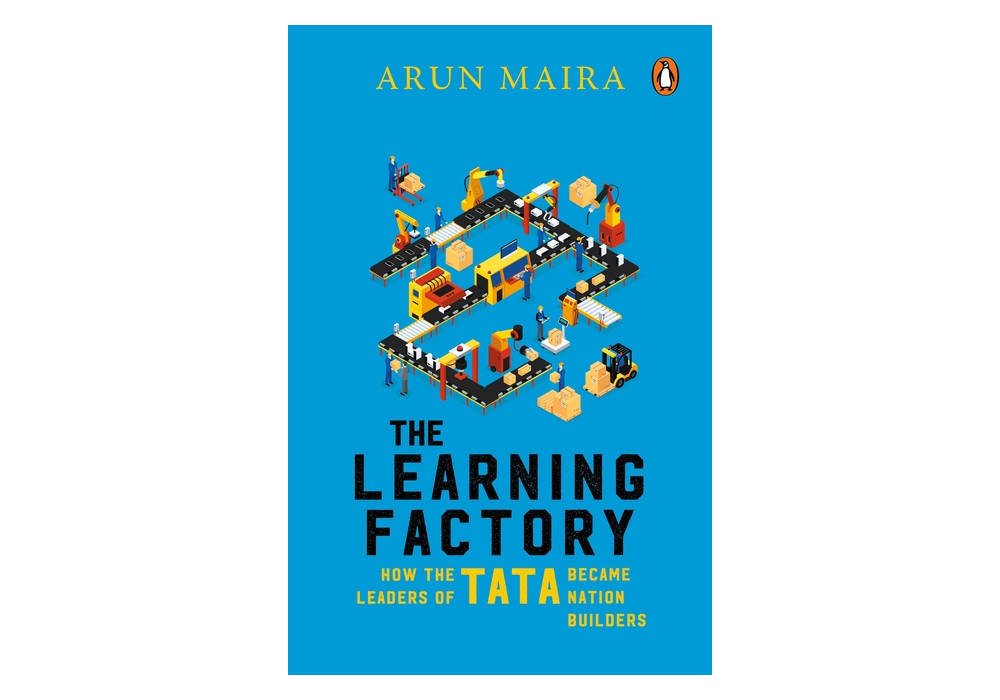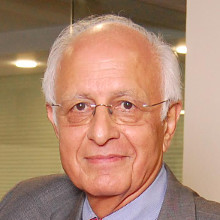I was working in Tata Steel’s head office, adjacent to Mr J.R.D. Tata, the chairman’s office, on the top floor of Bombay House, when Sumant Moolgaokar, who had taken over as the vice chairman of Tata Steel, in addition to his role as the vice chairman and managing director of TELCO, chose me to be his executive assistant. For the first year, I concentrated on assisting him with Tata Steel matters. Very soon he began to engage me in work with TELCO. Just when that had grown to become almost all of my work, he had me transferred from the rolls of Tata Steel to the rolls of TELCO and made me move down to an office on the first floor to be closer to his office.
Up on the fourth floor, I would often see Mr Tata walk by and he would sometimes stop to share a thought. Now I was out of his sight. Late one evening, a few weeks after I had moved down, Mr Tata’s executive secretary, Ms Hawgood, summoned me to see the chairman urgently. The next day TELCO was holding its Annual General Meeting (AGM). Mr Tata was the chairman. He was looking through the company’s accounts and preparing for it. It was very late in the evening. Everyone in the TELCO office had gone home, and I was on my way out too. I grabbed my notebook and rushed up to Mr Tata’s office.
‘Ah, Maira!’ he said, ‘I am sure you can tell me what I want to know—you are full-time with TELCO now, I hear.’ He then proceeded to ask me questions about this number and that, all of which I scribbled in my notebook, while repeating apologetically, ‘I will find out, sir.’
After the fourth or fifth ‘I will find out’, Mr Tata put the report down, took his glasses off and looked me in the eyes. ‘What sort of executive are you,’ he said, ‘when you don’t know the essential facts?’ I explained that I had been with TELCO only a few weeks, and that I would ensure I learn much faster. I also said that I would find out the information from TELCO’s financial controller first thing in the morning and let Mr Tata know.
Early next morning, I passed on Mr Tata’s queries to the financial controller, and I also reported to Mr Moolgaokar what the chairman was looking for.
Mr Moolgaokar was amused by my discomfort. ‘I am glad I was not in the office last evening when Jeh (J.R.D) called, and you were. He has a head for numbers, and I don’t. Will you make sure you give me the numbers the financial controller reports because I do not know them myself.’
Then he said something, almost as an aside, which has stayed with me since then. ‘I try to keep my head clear to focus on the facts that matter and not get confused with too many numbers.’
Rajiv Gandhi began to open up the Indian economy when he became the prime minister of India in a landslide election victory after the assassination of his mother, Indira Gandhi, in 1984. The first industry to be relieved from the stranglehold of industrial licencing was the automobile industry, where the government allowed the ‘broadbanding’ of licences. Previously, producers in the industry were permitted to make only a narrow range of products. For example, TELCO was permitted to make only medium and heavy commercial vehicles over 8 ton GVW (gross vehicle weight). It had to fight hard with the government even to be allowed to produce light commercial vehicles to compete with Japanese companies who the government had allowed into the Indian market in the early 1980s. With broadbanding however, any company in the industry could produce any automobile product. Therefore, companies that made cars were free to make commercial vehicles; and, vice versa, companies, such as TELCO, which had been restricted to making only commercial vehicles, could make cars too if they wished to. Moreover, foreign companies that had been shut out of the Indian market for thirty years, could now enter, provided they found an Indian partner.
Broadbanding gave TELCO an opportunity to enter the market for passenger cars in India, a market which had been underserved during decades of ‘protectionism’, and which was expected to grow fast. It was also a great opportunity for foreign companies to enter the Indian market. There was a rush of foreign companies looking for a good Indian partner. The most attractive potential partner for all of them was TELCO, which had the largest sales and service network in the country, as well as a very solid base of manufacturing capabilities. Within a few weeks of the government’s announcement of the new rules for the automobile industry, Toyota, Nissan, Honda, Mercedes-Benz, Volkswagen and Fiat had knocked on TELCO’s doors.
Who should TELCO choose? What should be the criteria?
Of course, we must consider the calibre of the companies—their products and their technology—as well as the terms of the agreement. Sumant Moolgaokar added another condition. He had always insisted that TELCO must be a ‘learning organization’, which learns fast to do things it was not able to do before. Thus, TELCO had learned how to make trucks and buses to Mercedes’s standards and export them in competitive markets, to make its own machine tools, including computer numerical control (CNC) machines, and then to design and make a light commercial vehicle (LCV) to beat the Japanese when they entered the Indian LCV market. He wanted to improve further TELCO’s ability to ‘learn to learn’. So he set me the task of finding out which of TELCO’s potential suitors was the best ‘learner’.
Honda was the winner. It was the smallest company amongst the six suitors. But it was the fastest growing one internationally. It was the first company in the world to meet California’s strict environmental-control standards; the first Japanese automobile company to enter the US luxury car market with the Acura, before Toyota and Nissan came in with their Lexus and Infinity; and the first foreign company to set up a greenfield automobile factory in the USA. This was all the more remarkable because Honda was a very young company, which was producing only motorcycles after the Second World War, and, indeed, had been discouraged by the Japanese government to produce cars because there were already well-established Japanese manufacturers for cars, viz. Toyota, Nissan and Mitsubishi. Honda’s engineers and managers proved to be the fastest learners in the Japanese industry, as well as the global automobile industry.
Coincidentally, Honda valued TELCO’s ability to learn too. They had seen Tata trucks and buses competing with Japanese and European products in South East Asian markets. TELCO entered into an agreement with Honda.
Honda’s approach of ‘learning while doing, and doing while learning’, matched Sumant Moolgaokar’s. Whenever something had to be studied—the market and customer needs, or production capacities, for example—Honda managers would look at the numbers and say they must ‘go to the real place, look at real things and talk to real people’.
They were practical people, as was Sumant Moolgaokar. When he found me in the TISCO head office studying reports with numbers, he promptly moved me to his office, and then sent me off to Pune to ‘rub my nose on the shop floor’. He said I would benefit by mingling with the workers and learning from them—real people doing real things.
Sumant Moolgaokar was in his seventies when TELCO entered into the agreement with Honda. Still, his mind and his spirit were as sharp as ever. The Honda directors who met him respected him greatly. They said they would be honoured if he would come to Japan to sign the agreement with them, where they could also show him their factories and research centres. I also accompanied him. He was impressed with the cutting-edge technologies he saw there.
The morning of our last day in Japan, I went to the small shop in the Okura Hotel, where we were staying, to buy some ball pens and Japanese stationery as souvenirs for my children. There I met Sumant Moolgaokar. He was examining something very carefully. It was a pair of ceramic scissors. He beckoned to me to come over. He showed me how beautifully the scissors were designed—its simplicity and its elegant shape. ‘It has ceramic blades,’ he pointed out, ‘which will not blunt.’ Then he showed me how cleanly the scissors cut a piece of paper. And he handed them to me and said, you try too. While he watched, I did.
‘This is high-quality, Maira,’ he said, and went on to purchase the scissors to bring back to India. There he had them on his office desk for the next few years, and would delight in cutting open envelopes with them whenever he had to.
Ten years later, I was a consultant in the USA, advising automobile companies on how to implement Total Quality programmes. Japanese companies, like Honda, had got far ahead of US companies in quality management. Some US companies hired Joseph Juran, the quality guru who, along with W. Edwards Deming, Kauro Ishikawa and Taichi Ohno, had led the Total Quality Movement in Japan, to help them catch up with the Japanese.
I was invited to listen to Joseph Juran being interviewed by PBS, the public TV channel. The interviewer asked Juran, who was in his nineties then, whether Americans would catch up with the Japanese. Juran seemed to be weeping when he replied, ‘They don’t get it. Quality is not in the numbers. It is in the people.’
(This excerpt is from Arun Maira’s book, The Learning Factory, published by Penguin Random House. Reproduced with permission.)

